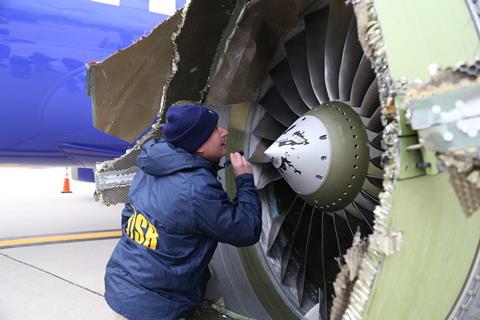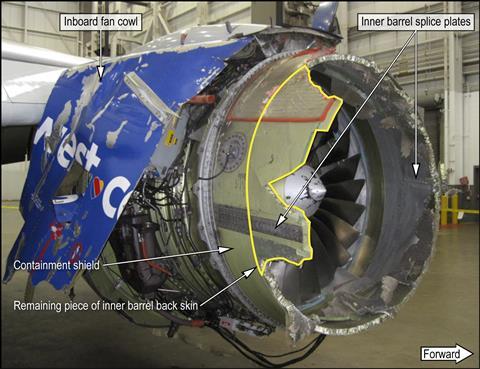The Federal Aviation Administration has proposed rules targeting Boeing 737NG nacelles following two engine failures late last decade that caused significant aircraft damage and killed one person.
Three new FAA proposed airworthiness directives, released by the US government on 11 December, would require airlines to inspect and modify 737NG cowls, inlets and other nacelle components.
Collectively, the proposals affect all US-registered 737NGs – about 2,000 jets. The measures are intended to make nacelle components more resilient to impact from engine components ejected due to CFM International CFM56 turbofan failures. Those engines power all 737NGs.

“The FAA has determined further rulemaking is necessary to reduce the probability of unsecured nacelle components should an engine fan blade failure occur,” the FAA’s proposals say.
Boeing did not respond to a request for comment.
The company has already been redesigning nacelle components in response to the two in-flight CFM56-7B failures, in 2016 and 2018. The FAA’s proposed orders would require airlines adopt Boeing’s changes, the documents say.
The FAA’s proposals would require airlines to replace fan-cowl hinge fittings and inlet cowl fasteners, and replace or modify “radial restraint” assemblies and exhaust nozzles. The FAA also proposes requiring airlines to change maintenance programmes.
“The FAA is issuing this AD to address fan cowls that are not strengthened, which, in the event of [a fan-blade out] occurrence, could depart the nacelle, potentially damaging a stabiliser, or [striking] the fuselage and window,” says one proposal.
Investigators attributed the 2018 CFM56 failure to a fatigue crack in a fan blade. Blade parts hit the radial restraint fitting, located on the fan cowl, causing the cowl to break up. A cowl “latch keeper” hit the aircraft’s fuselage, breaking a window and causing rapid decompression. One passenger died after being sucked partway out the window, the National Transportation Safety Board (NTSB) determined. The pilots landed the jet.

Because the engine containment shield did contain the part of the blade that hit it, the failure was not technically classified as an uncontained engine failure, but the result was the same, said the NTSB.
The NTSB also pointed to a fatigue crack as the source of the 2016 failure, which did not cause injuries. Both jets were 737-700s operated by Southwest Airlines.
In 2018, the FAA sought to prevent such engine failures by ordering airlines to complete ultrasonic inspections of CFM56 fan blades.
That did not address the nacelle problems.
Boeing responded by developing “structural enhancements” intended to help nacelle components withstand being struck by blades. The FAA requires Boeing finish that work by July 2028.


























